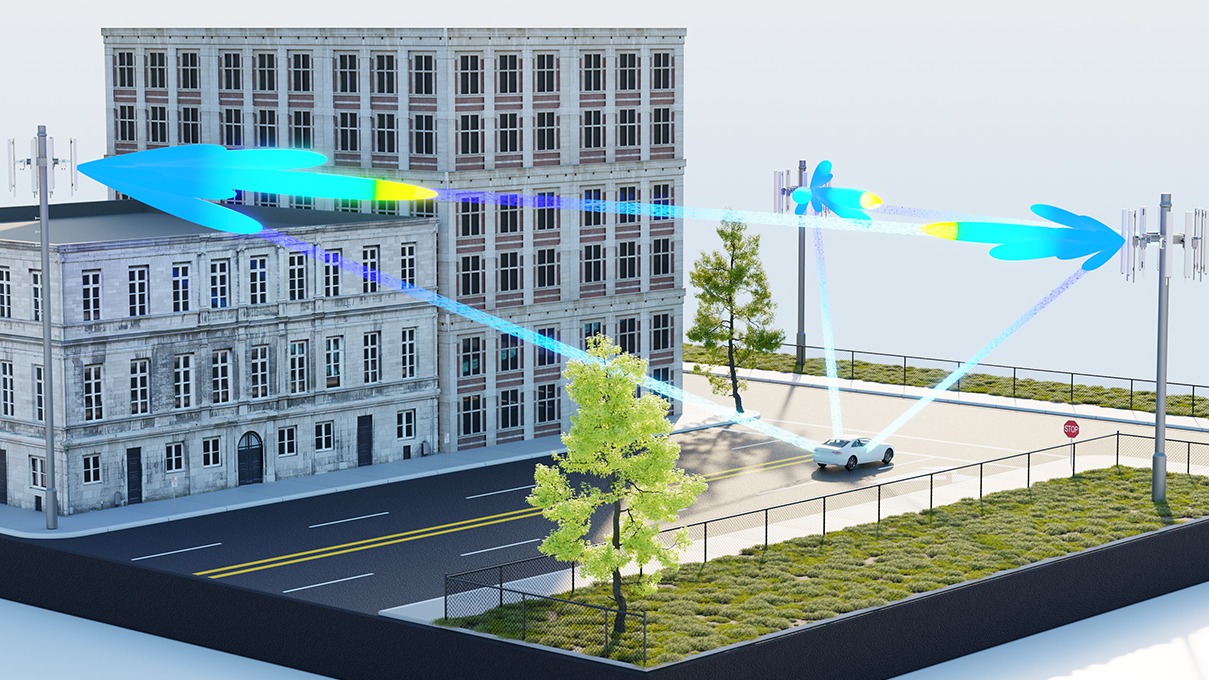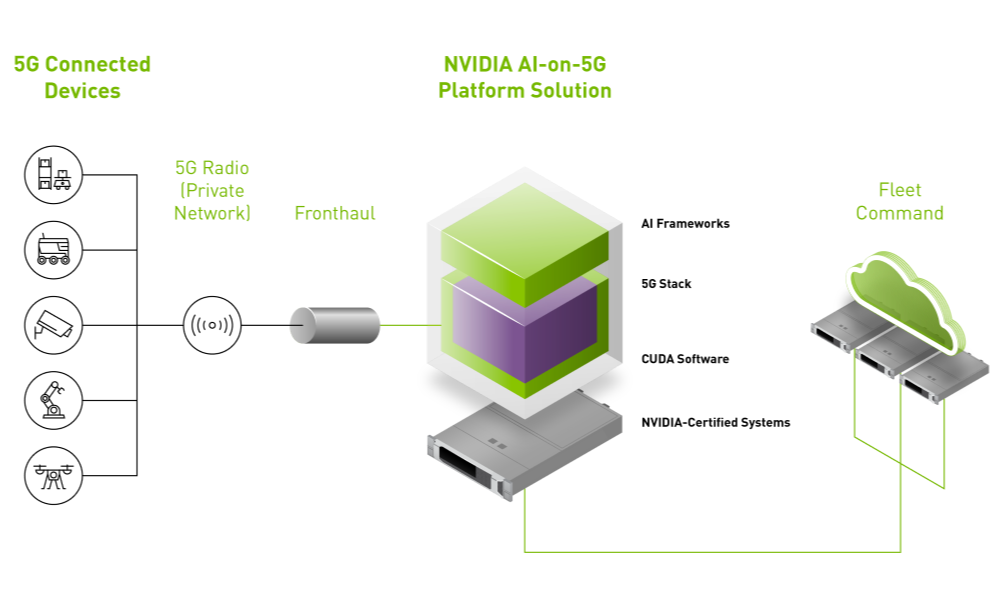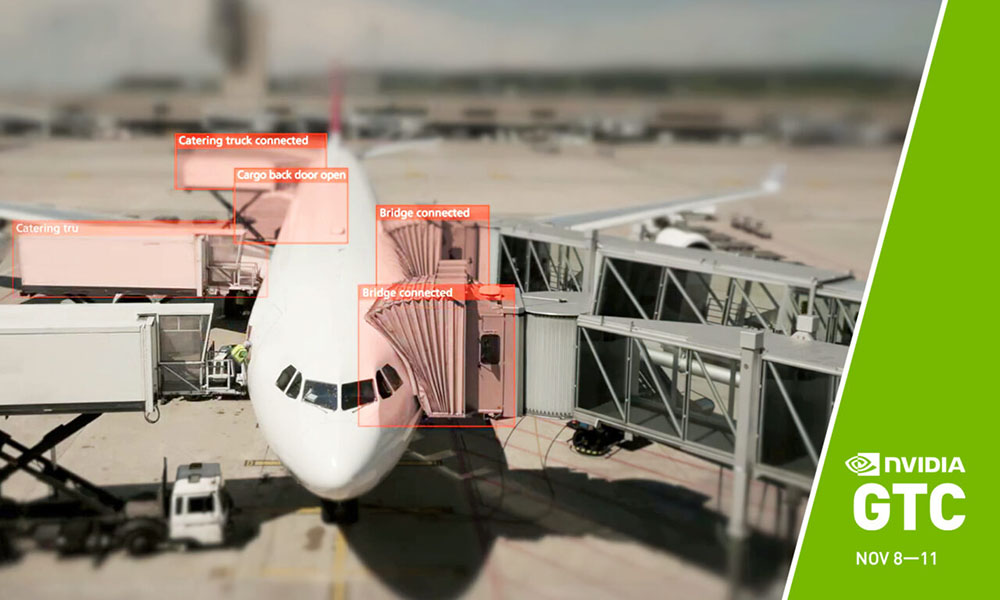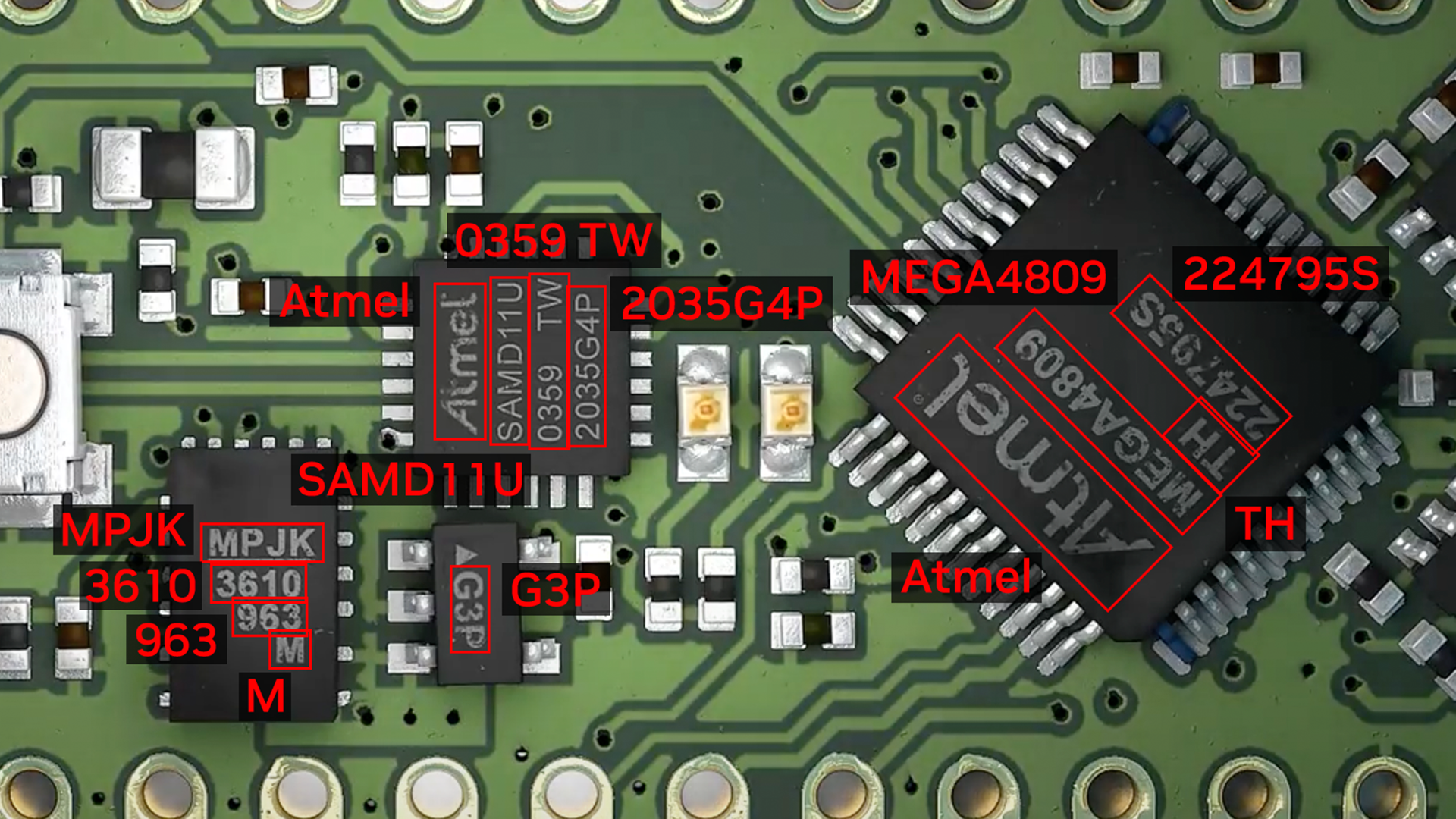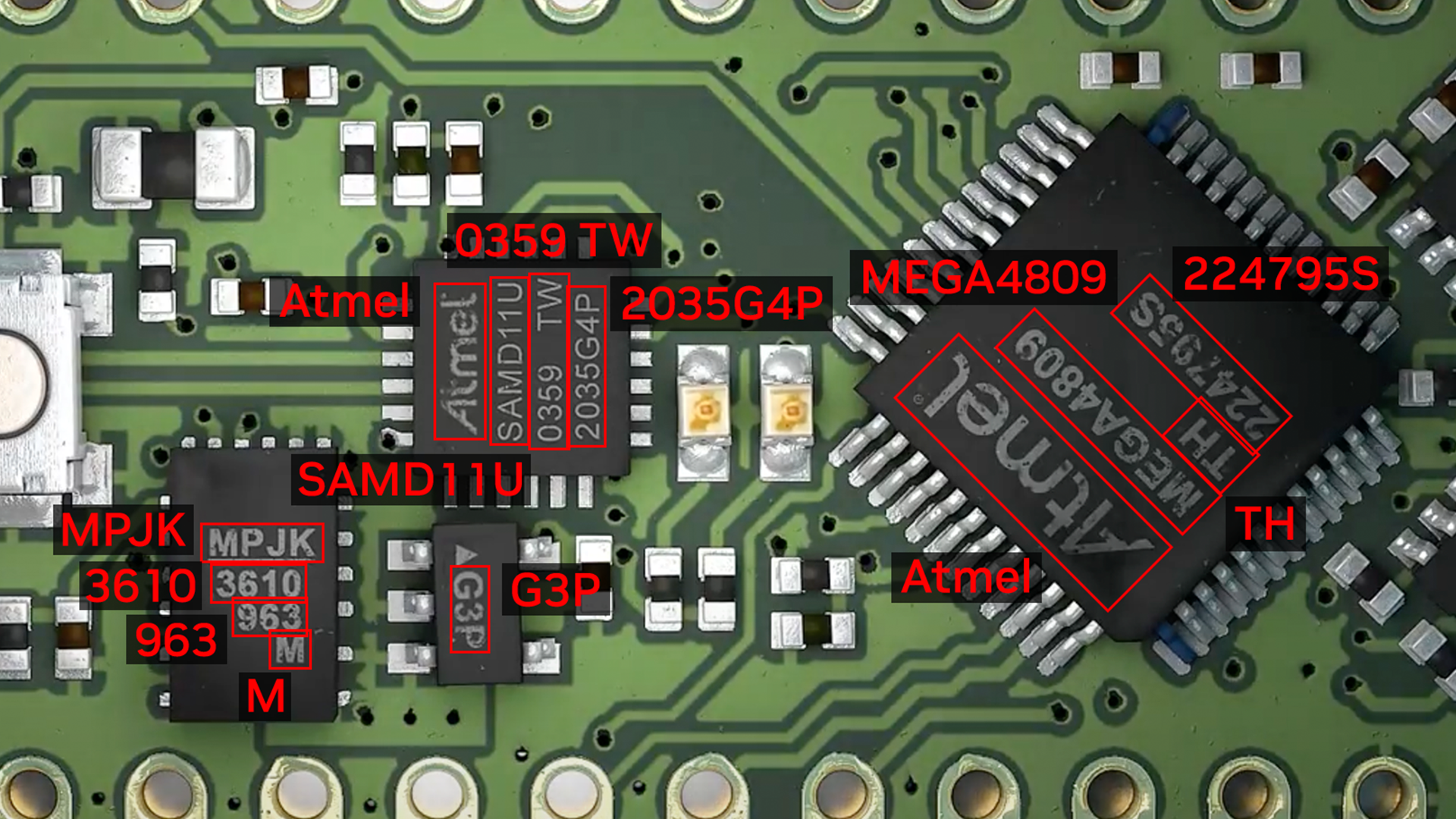AI has the power to transform every industry, but transformation takes time, and it’s rarely easy. For enterprises across industries to be as successful as possible in their own transformations, they need access to AI-ready technology platforms. They also must be able to use 5G connectivity at the edge to harness valuable data and inform their AI and ML models.
The advantages of 5G, such as lower latency and improved mobility as well as data throughput, also increase the application footprint of AI/ML applications within enterprises. According to an analysis by Verified Market Research, the market size for enterprise AI is projected to hit over $88 billion by 2030, up from $7 billion in 2022.
The future lives on the edge with AI, and any business that doesn’t stake its claim now risks falling behind. Industries across the spectrum are only beginning to unlock the tremendous value of AI when it is operationalized:
- Banks are looking to understand the behavior of customers using AI-powered mobile apps to customize the experience and provide personalized service.
- Manufacturers are beginning to use real-time data to prevent issues and challenges in their processes proactively, lowering maintenance costs and optimizing their operations.
- Educators are using AI learning platforms to give students uninterrupted access to lessons from any device or location.
One of the most powerful of these potential applications combines AI and visual computing to begin pushing the boundaries of the metaverse, the 3D evolution of the internet.
By analyzing the unending stream of data generated by connected devices, it is possible to generate a digital twin of anything from a car to the factory in which the car is built. These digital twins are virtual simulations of the physical objects that can be manipulated and altered using AI. Digital twins can simulate how these objects would behave before applying changes in the real world.
Across all these use cases, a common factor is the need to combine AI-ready, digital compute platforms with 5G connectivity at the edge to best leverage the data that increasingly resides there.
As the telecommunications industry has tackled the evolution to 5G connectivity, it has also recognized the value of helping other industries embrace AI to transform their own businesses.
For enterprises that want to realize the immense value of AI but lack the necessary IT infrastructure, telcos represent the best option to provide a managed offering to deliver these services. Telcos are uniquely positioned to take the core connectivity services they’ve perfected and combine them with AI-ready infrastructure to provide enterprises with a managed, connected, and end-to-end AI offering.
For telcos looking to offer new B2B services outside of their core connectivity services, this represents an enormous opportunity to grow revenue and increase profitability.
Most telcos today are not necessarily experts in IT infrastructure platforms or AI. Thankfully, they don’t have to be.
The AI-Ready Enterprise Platform, running VMware’s Cloud Director cloud service delivery platform with NVIDIA AI Enterprise, offers telcos a suite of data science tools and frameworks they can use to harness countless AI applications and reduce time to ROI while overcoming problems posed by unplanned implementations—all to help telcos transform their business and capture the opportunity AI represents.
Challenges of AI implementation
Companies that don’t adopt AI risk being left behind. But even those that embrace its potential find that it requires a high degree of operational effectiveness and cooperation between AI development teams and business stakeholders.
A recent report by Gartner predicted that 85% of AI projects would fail to deliver on their promises, due in part to a lack of internal skill within the implementing enterprise. It’s one thing to initiate an AI trial, but several factors have led enterprises to find that scaling any trials to generate financial impact is beyond their means:
- A well-trained AI system requires quality data to function; poor data will give bad results.
- The cost of replacing outdated hardware with AI-based systems can be prohibitive.
- Gaps in AI enablement for network and device performance monitoring lead to problems in gathering real-time insights.
Without a concerted, platform-based approach, costs can quickly spin out of control and a company’s return on investment is slowed. That’s why many enterprises looking to embrace AI will be on the lookout for a managed solution.
As a telco, if you can overcome these challenges yourself and deliver on that promise, you can set yourself up as the long-term AI and connectivity platform provider for enterprises looking to transform.
AI-Ready Enterprise Platform value
NVIDIA and VMware have partnered to make it as easy as possible for telcos to surmount any potential hurdles and begin offering AI as a service.
By supplying the application frameworks—including SDKs, tools, APIs, and documentation—NVIDIA and VMware enable telcos to become true SaaS players with the AI-Ready Enterprise Platform. NVIDIA GPUs and DPUs enable these new applications while VMware provides a unified, multi-cloud infrastructure for networking, security, and compute services out to the edge. This combination enables operators and enterprises to start from any compute workload and expand to other workloads on the same infrastructure.
AI-Ready Enterprise Platform with VMware Cloud Director and NVIDIA AI Enterprise unlocks the power of AI by delivering an end-to-end enterprise platform optimized for AI workloads. VMware Cloud Director virtualizes the GPU and enables multiple tenants to share and consume the GPU as a service. When telcos implement AI-Ready Enterprise Platform, the full value of AI and ML applications is achievable and can be delivered alongside a telco’s connectivity services as a true managed AI offer.
Ultimately, this sets up telcos to provide end-to-end infrastructure including the connectivity, edge computing, and applications that are key for AI democratization. Enterprises are free to scale without compromise, enabling more complex AI training and data analytics. This can include services like the following:
- Intelligent video analytics: Helps retailers keep a closer eye on shopper experiences and merchandise loss.
- Immersive digital twins over 5G VR: Helps teams virtually collaborate on product designs without being limited by location.
- AI-enabled traffic monitoring systems: Help municipalities take advantage of a telco’s subscriber base to improve congestion.
Conclusion
As new functions for AI continue to spread across every sector of the economy, late adopters may find themselves at a competitive disadvantage.
Telcos, with their development of 5G edge connectivity and vast troves of consumer data, find themselves on the front lines of this burgeoning frontier. With access to a growing ecosystem of AI applications built around the NVIDIA platform, telcos have a unique opportunity to deliver AI services. They can drive profitability to enterprises in the world’s largest industries, from transportation and healthcare to retail.
For more information, see the following resources:
- For more information about how AI-Ready Enterprise Platform with VMware Cloud Director and NVDIA AI Enterprise can unlock these applications and deliver a competitive advantage, download the Delivering AI as a service ebook.
- For more information about VMware and NVIDIA AI and GPU services, see Feature Fridays Episode 80 – VMware Cloud Director vGPU with NVIDIA

